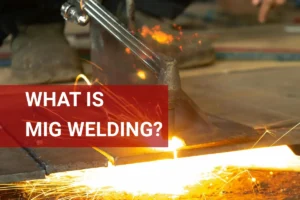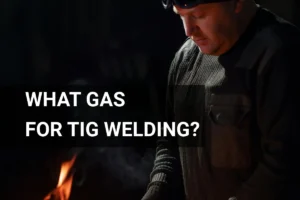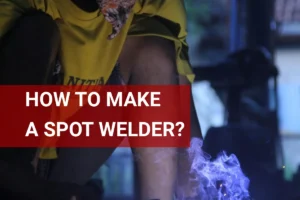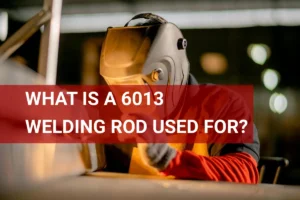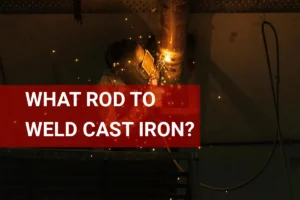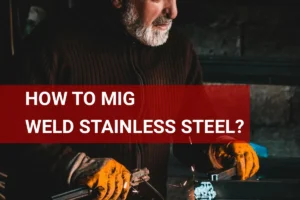What is Oxy Welding? Learn About Oxy Fuel Processes, Uses, and Techniques!
Published on: June 20, 2025 | Last modified: March 4, 2025
By: Joe Carter
Oxy welding uses a flame fueled by oxygen and gas to join metal pieces together. It’s a common technique in many welding applications.
One thing that’s regularly asked of me is what is oxy welding. It’s crucial to understand this process because it impacts the quality and strength of your welds. From my experience, mastering this method opens up all sorts of possibilities, whether you’re fixing a bike or constructing a gateway.
In this guide, I’ll cover how oxy welding works, different types, steps to perform it, factors to consider, solutions for common issues, aftercare tips, real-world applications, and when it’s time to switch methods. We’ll also dive into related topics like what is oxy fuel welding, and how do deoxidizers remove oxygen from the weld zone. Whether you’re a beginner or have some experience, there’s something here for you.
Contents
- What is Oxy Welding?
- How Does Oxy Welding Work?
- Types Of Oxy Welding
- Steps to Oxy Welding
- Factors Affecting Oxy Welding
- Advantages and Disadvantages of Oxy Welding
- How to Address Common Problems
- Aftercare, Inspection, and Advanced Tips for Oxy Welding
- Real-world Uses for Oxy Welding
- When to Try a Different Approach
- Frequently Asked Questions (FAQs)
- Conclusion
- Additional Reading
What is Oxy Welding?
Oxy welding uses a flame from burning oxygen and fuel gas. This process melts and fuses metals, making strong joints. It’s great for cutting, joining, and repairing steel, aluminum, and more due to its versatility.
How Does Oxy Welding Work?
Oxy welding, or oxy-fuel welding, uses a mixture of oxygen and fuel gas to create a high-temperature flame. The most common gas is acetylene, which burns at temperatures up to 3,500°C (6,332°F). This process melts the base metal at the joint, fusing them together. Operators typically use a torch to control the flame and maintain an oxygen-to-acetylene ratio of 1:1.5 for optimal performance.
Expertise in oxy welding lies in precisely controlling heat and flame. This control results in better fusion and penetration in the weld. The right mixture leads to cleaner work with less oxidation.
I’ve been down this road before. Nothing beats the feeling of melting metal just right! So, what is oxy-fuel welding? It’s a process where a careful balance of oxygen and fuel gas creates strong joints with minimal oxidation.
Types Of Oxy Welding
Oxy-acetylene Welding
Oxy-acetylene welding creates a flame by burning acetylene gas with oxygen. It’s the most common type of oxy welding. To perform this, set up the oxy-acetylene torch, attach the appropriate hoses, turn on the acetylene, then the oxygen, and adjust the flame for the right mix.
Oxy-hydrogen Welding
In oxy-hydrogen welding, hydrogen gas burns with oxygen to produce a high-temperature flame. This method is less common but effective for certain tasks. To use it, connect your torch to a hydrogen source, control the flow rates of both gases, and ignite for a clean, high-temperature flame.
Oxy-natural Gas Welding
Oxy-natural gas welding uses natural gas instead of acetylene as fuel. This type is popular due to its cost-effectiveness. To execute this method, connect your welding torch to a natural gas supply, adjust the oxygen and natural gas valves, and light the torch carefully to achieve a suitable welding flame. For professionals seeking optimal equipment choices, understanding the best welding machine for pipeline applications is essential.
Oxy-propane Welding
Oxy-propane welding employs propane gas, which burns cooler than acetylene. It’s effective for lighter tasks and easier to handle. To start, set up your torch with propane tanks, balance your oxygen supply, and ignite the torch to create a mellow, controllable flame.
Oxy-map Welding
This method uses MAPP gas, providing a hotter flame than propane and is ideal for brazing and cutting. To use it, attach your torch to MAPP gas cylinders, adjust the oxygen levels, and ignite the flame for efficient welding and heating.
We’ve wrapped up the different types of oxy welding here. Let us turn our attention to the steps involved in oxy welding.
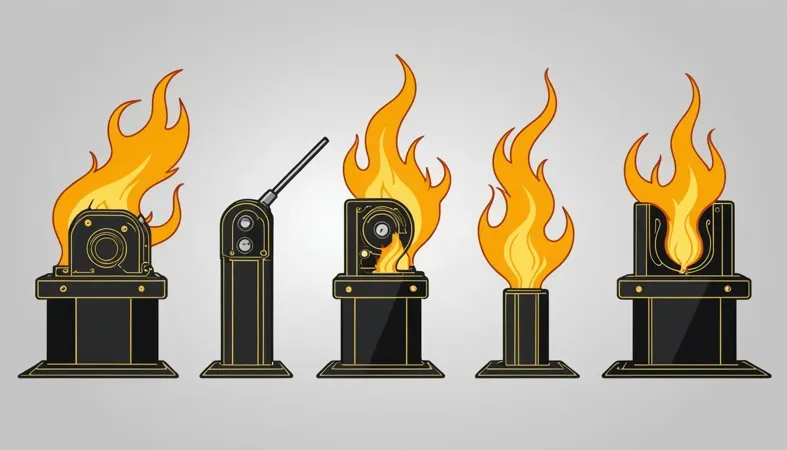
Steps to Oxy Welding
Now, we’ll cover the essential steps for oxy welding. Let’s dive in!
Prepare the Work Area
Start by clearing the workspace. Remove any debris that might catch fire or obstruct movement. A tidy area boosts efficiency and safety. About 30% of welding accidents occur in cluttered spaces, so keep it clean!
Gather Necessary Equipment
Get your oxy-fuel welding setup ready. You’ll need an acetylene tank, an oxygen tank, regulators, hoses, and a welding torch. Ensure you have the right fittings and that everything works. Checking connections beforehand prevents annoying interruptions!
Set Up Gas Cylinders
Secure the gas cylinders upright. Check that the oxygen cylinder has at least 20 bar (290 Psi) and the acetylene cylinder has about 1.5 bar (22 Psi). Use a proper wrench to open the valves gently. A steady hand makes all the difference when starting.
Attach the Regulators
Connect the regulators tightly to both gas cylinders. Adjust the pressures; standard settings are 0.5 bar (7 Psi) for oxygen and about 0.2 bar (3 Psi) for acetylene. Pay attention to the gauges; accuracy ensures a proper welding flame. Double-check everything, especially if you’re new—an oversight can lead to issues.
Adjust Flame Settings
Light the torch using a flint striker, not matches! Adjust the flame to achieve a neutral flame, which is crucial for most welding. A good neutral flame has an inner cone of about 1 to 1.5 cm (0.4 To 0.6 In) for optimal results. This setup prevents oxidation and promotes a clean weld. A proper flame burns brighter and works better. Knowing the significance of welding rod numbers helps in selecting the right rod for precise welding work. For those interested in exploring further, consult this guide on what the numbers mean.
Begin Welding Process
Now, start welding! Position the torch about 45 degrees to the base metal. Move slowly to create good fusion on the initial passes. Keep a consistent speed, ideally 5 to 10 cm/sec (2 to 4 In/sec). Perfecting your technique takes practice and patience, so don’t rush it!
You should now have a good understanding of the oxy welding process, techniques, and safety measures. In the next part, we’ll discuss factors influencing oxy welding.
Factors Affecting Oxy Welding
What factors impact the efficiency and quality of oxy welding?
Gas Mixture Ratios
The right ratio of oxygen to acetylene is crucial, typically 1:1.2 for optimal combustion. An incorrect mixture can lead to poor weld quality or even dangerous situations like backfires.
Material Thickness
Welding different thicknesses affects your technique. Thinner metals require less heat, while thicker materials may need preheating to ensure good fusion.
Flame Type
The flame type matters immensely. A neutral flame (Equal Parts Oxygen and Acetylene) is usually ideal. It minimizes oxidation and maximizes weld strength.
Welding Position
Your position significantly influences weld quality. Welds done on flat surfaces are generally easier and more consistent than overhead or vertical welds.
Environmental Conditions
Wind, humidity, and temperature can affect the welding process. High winds can blow away your flame, making control difficult, especially outdoors.
We’ve wrapped up the factors influencing oxy welding here. Let us turn our attention to the pros and cons of oxy welding.
Advantages and Disadvantages of Oxy Welding
Understanding the pros and cons of oxy welding helps you make informed decisions.
| Advantages | Disadvantages |
|---|---|
| Versatile: Works on various metals, including steel and aluminum. | Slower: Compared to other welding methods like MIG or TIG. |
| Cost-effective: Equipment costs are generally lower. | Requires skill: Mastering flame and technique takes time. |
| Portability: No need for electricity; suitable for remote locations. | Heat distortion: High heat can warp thinner materials. |
| Good for repairs: Effective for fixing structural elements. | Safety concerns: Risks from gas tanks and open flames. |
| Quick setup: Easy to prepare for welding. | Fume generation: Produces hazardous fumes; ventilation needed. |
We covered the benefits and drawbacks of oxy welding here. We will now cover solutions to common issues.
How to Address Common Problems
Let’s look at specific issues in oxy welding.
Flame Instability
Oxy welding can experience unstable flames. Check for an inconsistent blue color. Adjust the oxygen and acetylene mix; a good balance is generally 1:1 for cutting and 1:3 for heating.
Inadequate Heat Input
Oxy welding may not provide enough heat for thick materials. Ensure your tip size matches the material. Replace a size 0 tip (1.0 Mm) for thin pipes with a size 5 or larger (6.4 Mm) for heavier steel.
Welding Rod Issues
Oxy welding often suffers from poor rod selection. Use the correct rod material type. Keep a variety on hand; for example, use ER70S-6 rods for mild steel. Match the diameter to the base materials—1/16” (1.6 Mm) for thinner sheets.
Joint Contamination
Oxy welding joints must be clean. Check for oil, rust, or dirt. Use acetone or a wire brush to clean surfaces beforehand; spend time cleaning if the weld appears weak.
Excessive Welding Fumes
Oxy welding produces fumes that impair visibility. Ensure proper ventilation to reduce this risk. A well-ventilated area can lower respiratory hazards by keeping fumes to 5 mg/m³.
Aftercare, Inspection, and Advanced Tips for Oxy Welding
Here are essential aftercare, inspection, and expert tips to enhance your oxy welding process.
Aftercare Tips
After an oxy welding session, let your equipment cool for at least 30 minutes to avoid thermal shock. Clean your goggles and face shields with a soft cloth and lens cleaner like OptiClear® to remove residues. Also, cycle the cooling hoses from your torch to maintain their flexibility and extend their lifespan.
Inspection
Inspect the torch tip size for wear; replace tips showing a noticeable reduction of 0.5 mm from their original 3.5 mm diameter. Check hoses for cracks with a flashlight; there shouldn’t be any pinholes or swelling. I use Harris® hoses, which impress me with their durability, so look for reliable brands during your inspection.
Expert Tips
Set your oxyacetylene pressure to 0.5 bar (15 Psi) for precise flame control. Conduct a thorough pre-weld test on your steel sections, checking for contaminants with a 20x lens to improve bead quality. Finally, adjust your flame envelope using 3D examination; a neutral flame yields better penetration on steels over 5 mm (0.2 Inches) thick.
Real-world Uses for Oxy Welding
I’ve seen oxy welding work wonders in various fields. Here are some of its uses:
- Metal Fabrication: Oxy welding excels at joining thick metal parts. It’s popular for creating custom units and repairs in industrial settings.
- Artistic Metalwork: Artists often use oxy welding for sculptures and installations. It allows for intricate designs due to its precision.
- Aerospace Repair: Oxy welding repairs aluminum aircraft components. It’s preferred for producing clean, strong joints, which are vital in this field.
- Automotive Restoration: Mechanics use oxy welding for classic car restoration. It effectively repairs bodywork while maintaining structural integrity.

When to Try a Different Approach
There are alternatives to oxy welding that you might want to consider. Options like MIG (Metal Inert Gas) welding, using machines such as the Hobart Handler 210 MVP, can provide similar results in many projects. Also, TIG (Tungsten Inert Gas) welding is excellent for precise welds, especially with thinner materials. Understanding the role of shielding gases like argon or carbon dioxide can greatly impact your welding results, and you can explore more on what gas is used for welding.
I’ve found that when portability is a must, gasless MIG welders, like the Forney Easy Weld 261, often save the day. In situations where heat input needs to be controlled, laser welding offers precision without overheating. Choose the right tool for your specific job; it’s about efficiency and outcome.
Frequently Asked Questions (FAQs)
Now let us look at some questions I typically get asked.
What is Oxy Welding Used for?
Oxy welding is used for cutting and joining metals. This method can effectively weld ferrous and non-ferrous metals. It’s common in fields like automotive and construction due to its versatility and cost-effectiveness.
What is the Difference Between Welding and Oxy-acetylene?
The main difference between welding and oxy-acetylene is the fuel source. Oxy-acetylene uses a mix of oxygen and acetylene gas, which produces a hotter flame. This high-temperature flame enables faster welding, critical in heavy metal fabrication.
What Fuel is Used for Oxy-fuel Welding?
The fuel used for oxy-fuel welding is usually acetylene. Acetylene burns at about 3,200°C (5,792°F) when mixed with oxygen. This temperature provides excellent fusion properties for welding diverse materials.
Does Oxy Welding Require Electricity?
No, oxy welding doesn’t require electricity. It relies solely on oxygen and fuel gas, which makes it portable and usable in remote areas. This independence from electricity enhances its accessibility for various applications.
How Do Deoxidizers Remove Oxygen From the Weld Zone?
Deoxidizers remove oxygen from the weld zone by reacting with dissolved oxygen and forming stable oxides. This process helps improve weld quality by reducing porosity, ensuring stronger and cleaner welds in critical applications.
What is Oxidation in Welding?
Oxidation in welding refers to the chemical reaction between metal and oxygen. This reaction can weaken welds by forming oxides, leading to defects. Understanding oxidation is crucial for choosing appropriate shielding methods and materials.
How is Ozone Produced by Welding?
Ozone is produced by the ultraviolet radiation from the electric arcs in arc welding. The high-energy UV light interacts with oxygen in the air, creating ozone, which can be harmful in high concentrations during the welding process.
How to Oxy Fuel Weld?
To oxy fuel weld, you need to first set up your torch and gas cylinders correctly. Light the acetylene first, then adjust the oxygen to get a neutral flame. This flame is essential for effective welding of metals.
Conclusion
Phew, that’s a lot to take in. We covered what oxy welding is, how it works, types of oxy welding, steps to follow, factors affecting the process, common problems and solutions, aftercare tips, real-world uses, and when to consider different methods. Plus, we answered frequently asked questions to enhance your understanding of this important technique.
So, what is oxy welding? It’s a method that uses a combination of oxygen and fuel gas to create a flame for cutting or welding metals. As you’ve seen, with key practices like understanding oxidation and proper welding steps, oxy welding is crucial in various applications. If you need additional advice, I’m here to help with any questions about oxy fuel welding techniques, safety tips, or even troubleshooting.
If you’re eager for further information, visit What is Welding for comprehensive insights.
Additional Reading
- Little, R. L. (1999). Welding and Welding Technology. New York, NY: McGraw-Hill Education.
Joe Carter is a retired welding professional with over 40 years of hands-on experience in the industry, spanning ship repair, structural welding, and even underwater projects. Joe is a master of MIG, TIG, and Stick welding. Passionate about mentoring the next generation of welders, Joe now shares his decades of expertise and practical insights to help others build rewarding careers in welding.
Gas Welding, Metal Fabrication, Oxy Welding, Oxy-fuel Processes, Safety Tips, Structural Integrity, Welding, Welding Applications, Welding Safety, Welding Techniques
